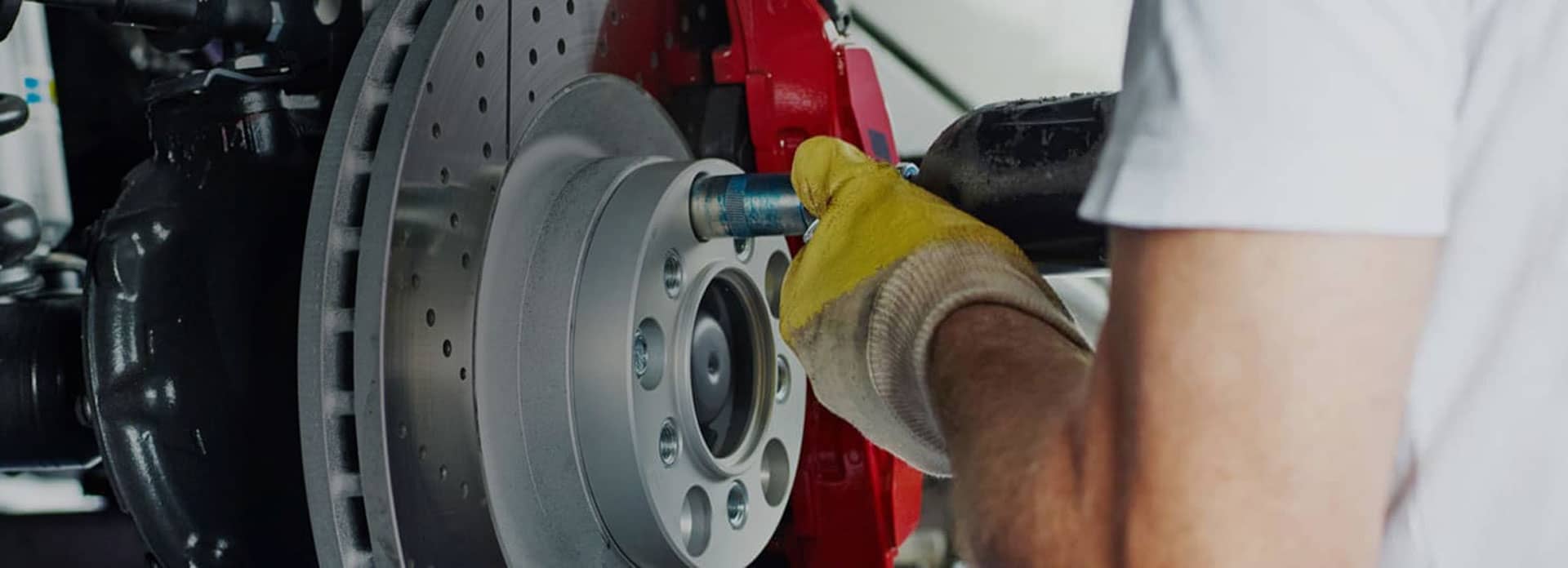
AUTONET TV
Archive for September 2025Go with the Flow (MAF Sensor Replacement)Posted September 28, 2025 3:39 AMIf your vehicle has an internal combustion engine, it depends on two things to make propulsion power for you to be able to motor on down the road: fuel and air. The engine mixes the two in just the right proportion so that they can be ignited, creating a series of tiny explosions that are coordinated in such a way that your vehicle moves steadily ahead. One of the key parts to making sure that mixture of air and fuel is correct is a little tube that measures the amount of air that’s coming into the engine. It’s called a Mass Air Flow sensor, or MAF sensor. There are two wires in this tube, one of which is heated up with electricity and the other isn’t. When the air flows over the heated wire, it cools. When the temperature of the two sensing wires is different, the MAF sensor either increases or decreases the current to the heated wire to try to make it the same as the other wire. That’s sent to a small computer that tells the engine to change the amount of air going into the engine. Some signs of an MAF sensor problem? Your vehicle doesn’t have as much power as it used to, or your fuel economy might drop. Your vehicle may not start, and the Check Engine light may come on. If you spot these signs, it’s important to bring your vehicle in so we can check things out. At the same time a technician looks at the MAF sensor, they’ll also check the connector that runs to the engine’s computer and replace it if necessary. They’ll also inspect other parts of the system, such as hoses, for problems. By the way, one way to minimized MAF sensor problems is make sure your vehicle’s engine air filter is regularly changed. That can help you be sure that the air that gets to your vehicle’s engine is clean. McPherson Automotive Have a Ball! Know your Ball Joints (Ball Joints)Posted September 21, 2025 3:41 AMWe all have joints in our own skeletal system, but did you know your vehicle has some joints of its own? One of the most important is called a ball joint. One of the interesting things is that it's somewhat similar to the ball and socket joints we have in our hips and shoulders. A ball joint allows two parts it joins together to move in more than one direction at the same time. Think about your wheels. They have to move up and down when there are bumps in the road but in sideways directions when you are making a turn. As you can see, the ball joints are important for your steering and handling to work correctly. Since ball joints do so much, they can wear out and become loose. When the ball wears down or the socket gets worn, there can be too much play in them. It can get so bad that the ball can come out of the socket and your wheel can fall off, a dangerous situation. Ball joints can also seize up. Some of them are sealed and never require maintenance; others require periodic lubrication. Here are some signs that your ball joints are going bad:
The earlier a failing ball joint is discovered, the better. The best way is to have regular inspections by a technician. Your service facility will periodically check ball joints at intervals recommended by the manufacturer. The cost to replace them can vary widely depending on whether you have a vehicle with a 2-ball or 4-ball configuration. Also, sometimes just the joints can be replaced, but other times they are part of a larger control arm assembly that has to have all the parts replaced at the same time. Your vehicle's proper steering, handling and tire wear all contribute to a better, safer driving experience. Make sure your ball joints are up to the job. McPherson Automotive The Vivacious Vernal Vehicle (Preparing Vehicle for Spring)Posted September 14, 2025 3:38 AMMost of us look forward to spring because the days are longer, the weather's warmer and we can finally get our vehicles into warm weather mode. Here are a few things that will breathe fresh energy into anyone's car, SUV, truck or van. First thing is a good cleaning, especially underneath. If you live where salt and brine are used on the roads, it's important to get that off. One thing to note… if you hose off your undercarriage, be careful not to get your spark plugs/wires wet. You could notice your vehicle running rough plus the Check Engine light may come on. It usually dries out quickly, but if the engine light stays on for more than a couple of days, have your service facility check it out. Next, replace your windshield wipers. They've taken a beating through the winter. New ones will have fresh rubber and you'll see clearly (and safely) out your windshield again. Have your brakes inspected. That salt doesn't do your brake's metal components any good. Have a technician make sure your pads and rotors are clean and properly lubricated so they can stop you when you ask them to. Speaking of wheels, it's a good time to have your tires checked, too. Road debris and potholes can take a toll on tread and sidewalls. It may also be a good idea to have a technician check your alignment since you likely have hit something pretty hard on a patch of rough road at some time during the winter. Make sure your tire pressure is appropriate for the rising temperatures. As the outside air warms up, your tire pressure climbs without you adding any air. Make sure it's what the manufacturer recommends. Finally, treat your vehicle's interior to a thorough refresh. Those floor mats and carpets may be white with salt; clean 'em up. Get rid of wrappers, drink lids, empty water bottles and anything else that's fallen down. And if you need to, have your upholstery cleaned so it looks and smells new. A clean exterior is nice, but since you spend your time inside your vehicle, it'll feel even better when your cabin is sparkling fresh.
A Fluid Situation (Check Fluid Levels)Posted September 7, 2025 3:49 AMThere's one fluid in your car you are always careful to keep at a certain level: the fuel. If you don't have fuel, you're not going anywhere. Your vehicle has other fluids which are vitally important to proper and safe operation, too. So, here's a "level" headed approach to those "other" fluids. Engine oil. This one's probably the most important fluid to maintain at the proper level. Without enough oil, you'll wear out your engine prematurely. Sometimes vehicles have warning lights on the dash that will tell you to get your oil checked. Don't ignore that one; get it checked immediately. Certainly don't go on a long trip at high speeds with your oil level low. Oh, and it's not good to have too much oil in, either. Our pros at McPherson Automotive can advise you on oil levels and tell if you if you should be concerned about abnormal fluctuations. Windshield washer fluid. OK, this is one you probably know about. You certainly miss it when it runs out. You find yourself trying to clean your windshield with the wipers but you need a little liquid help. Unless you live in an area that requires you to use an awful lot of windshield washer fluid, one fill-up can often last between oil changes. Modern vehicles have large enough windshield washer fluid reservoirs to keep you going for quite a while. Engine Coolant. Here's another fluid you need to keep your engine running properly. You need it to keep the engine running at the proper temperature. Plus, you'll need it for heat when the temperature gets chilly outside. Power Steering Fluid. If you have a vehicle that uses power steering fluid, it's important to keep the correct amount in your system. Without enough of it, you might find steering difficult. Plus, if you’re losing power steering fluid, our experts at McPherson Automotive can find out why and perhaps prevent a more expensive repair later. Brake Fluid. You may have heard of hydraulic brakes. Hydraulic refers to the fluid and is one of the key reasons your brakes work. Levels should be checked regularly and, like power steering fluid, if you're losing brake fluid, a technician needs to find out why so you can get the issue repaired and maintain your stopping ability. If you have regular preventative maintenance performed at McPherson Automotive, we’ll keep an eye on all of these fluids when you bring your vehicle in for service. McPherson Automotive | ||
SearchArchiveJuly 2018 (16)August 2018 (4) September 2018 (5) October 2018 (4) November 2018 (4) December 2018 (5) January 2019 (5) February 2019 (4) March 2019 (5) April 2019 (4) May 2019 (4) June 2019 (5) July 2019 (4) August 2019 (4) September 2019 (5) October 2019 (4) November 2019 (4) December 2019 (5) January 2020 (5) February 2020 (4) March 2020 (5) April 2020 (4) May 2020 (5) June 2020 (4) July 2020 (4) August 2020 (5) September 2020 (4) October 2020 (4) November 2020 (5) December 2020 (4) January 2021 (6) February 2021 (4) March 2021 (4) April 2021 (4) May 2021 (5) June 2021 (4) July 2021 (4) August 2021 (5) September 2021 (4) October 2021 (5) November 2021 (4) December 2021 (4) January 2022 (6) February 2022 (4) March 2022 (4) April 2022 (4) May 2022 (5) June 2022 (4) July 2022 (5) August 2022 (4) September 2022 (4) October 2022 (5) November 2022 (4) December 2022 (4) January 2023 (5) February 2023 (4) March 2023 (4) April 2023 (5) May 2023 (4) June 2023 (4) July 2023 (5) August 2023 (4) September 2023 (4) October 2023 (5) November 2023 (4) December 2023 (5) January 2024 (5) February 2024 (4) March 2024 (5) April 2024 (4) May 2024 (4) June 2024 (5) July 2024 (4) August 2024 (4) September 2024 (5) October 2024 (4) November 2024 (4) December 2024 (5) January 2025 (4) February 2025 (4) March 2025 (5) April 2025 (4) May 2025 (4) June 2025 (5) July 2025 (4) August 2025 (5) September 2025 (4) October 2025 (4) November 2025 (5) December 2025 (1) | CategoriesDashboard (1)Air Conditioning (7)Battery (7)What Customers Should Know (56)Auto Safety (4)Exhaust (6)Fuel Economy (6)Maintenance (7)Fluids (5)Battery Replacement (1)Transmission (2)Fuel Saving Tip: Slow Down (1)Customer Detective Work (1)Tires and Wheels (3)Check Engine Light (3)Oil Change (3)Alignment (5)Keys to a long lasting vehicle (2)Fuel System (4)Brakes (12)Safe Driving (1)Suspension (1)Cooling System (4)Alternator (3)Water Pump (1)Tires (8)Timing Belt (2)Windshield Wipers (3)Drive Train (3)Inspection (3)Steering (6)Service Standards (3)Older Vehicles (1)Tire Rotation and Balancing (2)Brake Service (6)Shocks & Struts (1)Cabin Air Filter (1)Safety (2)Differential Service (1)Wheel Bearings (1)TPMS (2)Spark Plugs (1)Trip Inspection (2)Engine Air Filter (2)Winter Prep (1)Headlamps (1)Service Intervals (1)PCV Valve (1) | |












